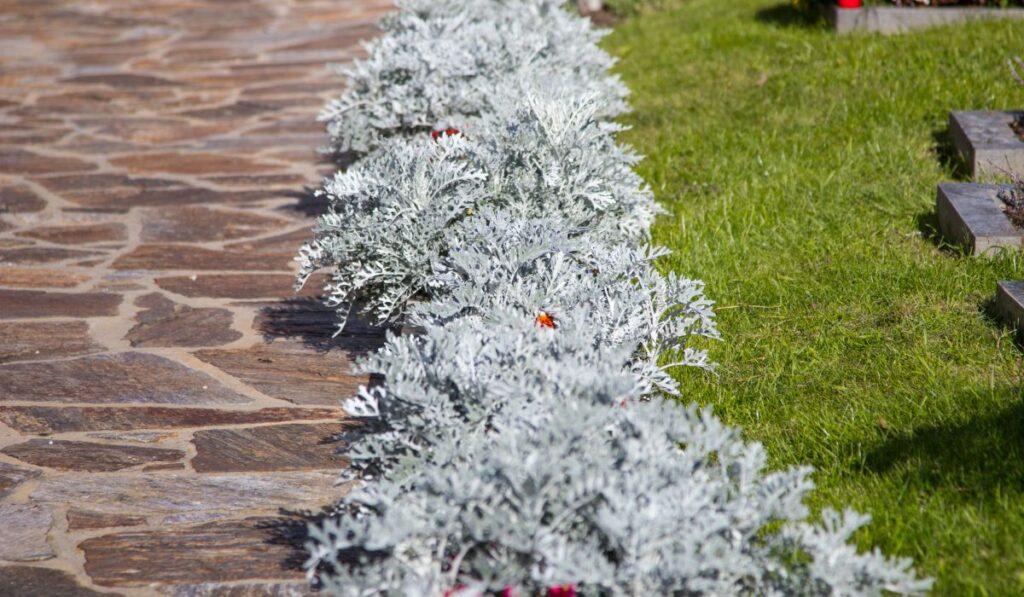Posts Tagged garden design
Get the Best Bushes for Your Low-maintenance Garden
If you’re a busy homeowner, chances are you don’t want to add gardening chores to your overflowing plate. But you can turn your yard into a beautiful landscape bursting with color and life.
Proper planning allows you to create a stunning low-maintenance garden with colorful and evergreen bushes. These are hardy, slow-growing shrubs that require minimum pruning, saving you the hassle of frequent pruning.
Dig in and learn more about the best shrubs for your low-maintenance garden.
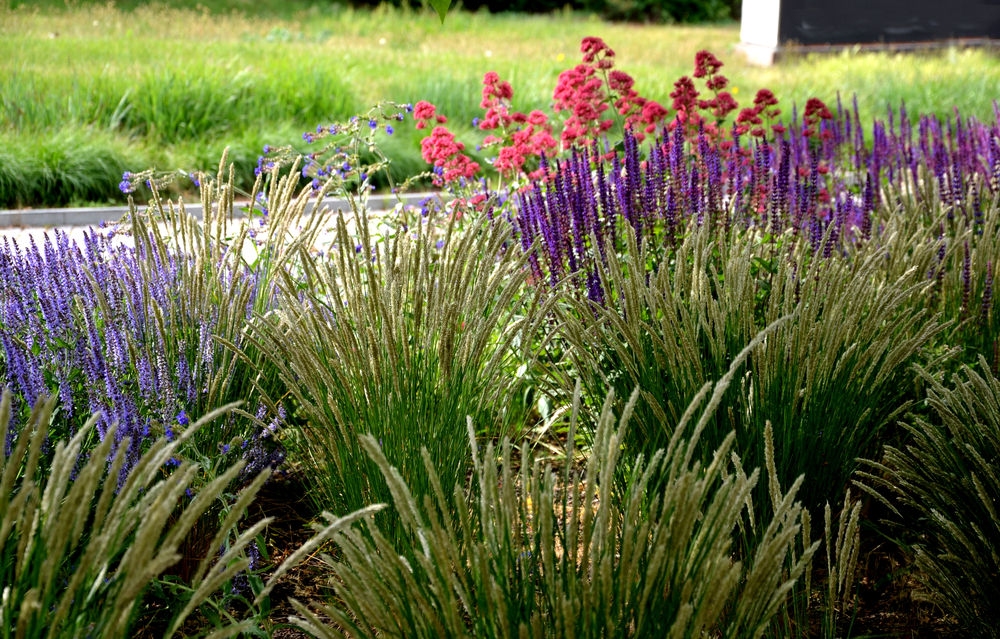
How to Choose the Best Shrubs for Your Home
The key to creating a low-maintenance garden is filling it with shrubbery that never grows out of control or requires constant pruning. It allows for a rewarding gardening experience that doesn’t saddle you with recurring chores.
1. Sunlight
The amount of direct sunlight your yard receives affects the growth vigor. Ideally, plants require at least six hours of direct sunlight to thrive. However, you can still create a lush and colorful yard with beautiful blooms and fabulous foliage if your yard receives 3 to 6 hours of direct sunlight. Insufficient sunlight can lead to stunted growth and weak stems and give your bushes a drab appearance.
Observe your yard on a sunny day and note the light and shade pattern. Creating a detailed light map paints an accurate picture of how much light your yard receives to help you create the perfect garden.
2. Rooting System
Root size is a priority consideration if your garden is near your house. Shrubs with extensive roots can damage your home’s foundation, sidewalk, driveway, or septic system, saddling you with expensive repairs. Shallow roots shrubs such as hydrangea, forsythia, camellia, rhododendron, plantain lilies, and boxwoods are ideal for such gardens.
3. Sunlight Preferences
It may come as a surprise, but shrubs have varying sunlight requirements. Some shrubs thrive in full sun, while others prefer partial or deep shades. Understanding sunlight preferences is crucial to planning your landscape. You can match them with the ideal location to ensure growth and survival and create a blooming garden.
4. Size
Paying attention to the height and spread of your preferred shrubbery helps eliminates landscaping problems. Shrubs fall into three broad categories—small, medium, and large.
- Small shrubs are under 3 feet tall with a spread of 1 to 4 feet.
- Medium shrubs are under 6 feet tall and spread 3 to 6 feet.
- Large shrubs grow up to 20 feet tall with a spread of 6 to 15 feet.
The Best Low Maintenance Bushes for Your Yard
These shrubs will help you create a beautiful, low-effort garden without saddling you with routine gardening chores.
Dwarf Alberta Spruce
Dwarf Alberta Spruce is a compact, evergreen shrub with a distinct pyramidal shape. The leaves are bright, green aromatic needles and are densely packed, giving the dwarf tree a tight, fuzzy look. Dwarf Albert spruce rarely grows above 13 feet and has an astonishingly slow growth rate. It only grows 2 to 4 inches yearly, so it rarely requires pruning and will probably never outgrow its designated space. It thrives in well-drained acidic soils and direct sunlight.
Knock Out Rose
Knock Out Rose is a hard flowering shrub renowned for its beautiful continuous blooms during the growing season. It showcases vibrant flowers in red, pink, and yellow colors. Despite belonging to the rose family, Knock Out Rose is notoriously easy to grow. It’s resistant to pests and diseases and self-cleans—sheds its spent flowers without requiring deadheading. It can grow up to 7 feet tall, thrives in well-drained soils, and requires at least six hours of sunlight daily.
Blue Star Juniper
Blue Star Juniper is a compact slow-growing evergreen shrub with dense, silver-blue foliage. Mature shrubbery is about 3 feet tall with a spread of about 3 feet. They feature awl-shaped needle-like leaves arranged in clusters on tiny stems resembling stars. The unique shape of these slow-growing shrubs adds beauty and appeal to any landscape. Blue Star Juniper is exceptionally hardy, requires little maintenance, and thrives in various soil conditions.
Boxwood
Boxwoods are hardy, evergreen shrubs renowned for their dense foliage, compact growth habit, and landscaping versatility. The growth height depends on the specific variety and pruning style but typically ranges from 1 to 15 feet. Dwarf cultivars tend to stay compact, growing to a maximum height of about 2 feet. Boxwood bushes are slow growing, usually about 12 inches a year, and have spread ranges from 1 to 10 feet. They produce tiny white blooms in spring, thrive in well-drained soils, and grow best in partial or full sun.
Rhododendron
Rhododendrons are a diverse group of shrubs renowned for their showy, colorful flowers. Their growth height depends on the variety and cultivar. Compact and dwarf cultivars are 1 to 3 feet tall, while large rhododendrons are usually 6 to 15 feet tall. Compact shrubs may have a spread of 2 to 4 feet, while large ones can have a spread of 6 to 10 feet. Rhododendrons thrive in coarse, acidic soils and require partial sun exposure.
Create a Thriving Low Maintenance Garden
Shrubs are ideal an ideal choice if looking to create a beautiful, low-maintenance garden. Carefully choosing the shrub varieties can help pepper your landscape with a mix of evergreen and flowering shrubs. Working with an expert service can help you make the best choices and transform your drab yard into a beautiful paradise teeming with life.
Get the best low-maintenance bushes for your garden. Contact us today!
From Fire Pits to Outdoor Lounges: Backyard Ideas for Every Style
Backyards are often overlooked when looking to create a comfortable and inviting home. With the right design and planning, you can make this outdoor space a beautiful extension of your living area. Sprucing your backyard creates the perfect space for relaxing or entertaining and can improve your health and wellbeing. Whether you have a tiny patio or a sprawling lawn, there are plenty of backyard ideas to transform your space into a true oasis.
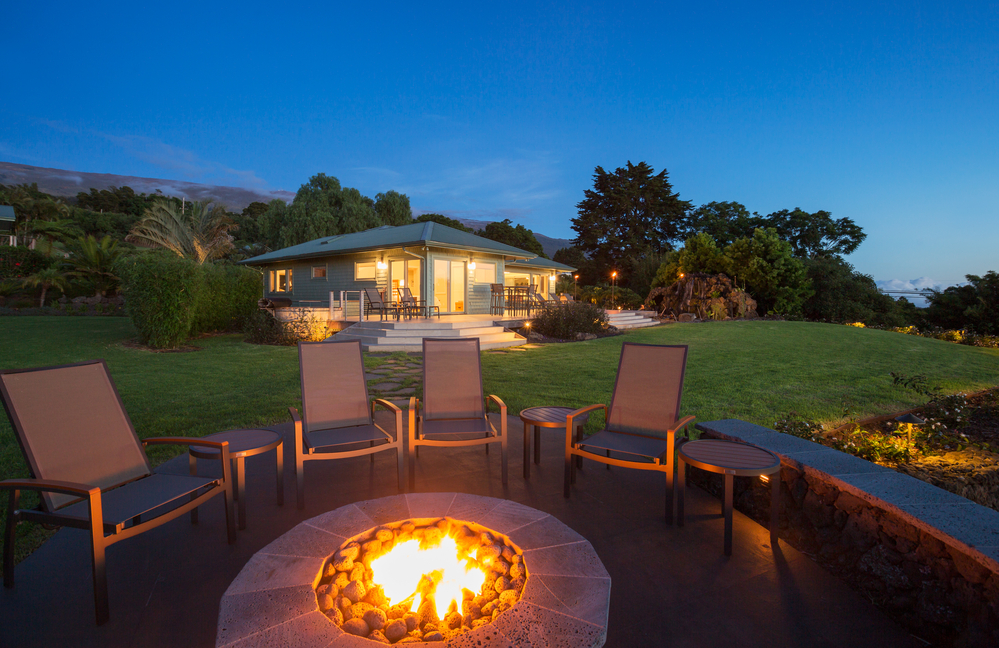
Outdoor Dining Area
An outdoor dining area can help you appreciate the Mediterranean climate in Sonoma County. You can enjoy the warm, sunny weather while sharing a hearty meal outdoors with friends and family.
A careful choice of dining table and chairs allow you to create a functional and inviting outdoor dining area. Teak or metal are ideal choices because they can easily withstand the elements. Incorporating outdoor pillows and cushions adds a splash of color and comfort to the space.
An umbrella or a pergola provides shade and protection from the sun to let you spend more time outdoors during the warmer months. They also add an element of design to the space, giving it a visually interesting and intentional feel.
If the space allows, you can add some greenery and natural beauty to the outdoor dining area by surrounding it with beautiful plants. Succulents, lavender, or rosemary make a great choice. These plants add visual interest, enhance the ambiance, and provide pleasant aromas.
Immersive Garden
Immersive gardens are great backyard ideas that improve curb appeal and uplift your quality of life. These are specially designed gardens that provide a fully immersive and sensory experience.
Immersive gardens go beyond the visual appeal to engage all your five senses, creating a truly unique experience.
Immersive gardens comprise plants, flowers, trees, and other elements carefully chosen for their sensory properties. For instance, jasmine, lavender, or roses stimulate the sense of smell. Ornamental grasses or lamb ears are incorporated for their unique textures.
The sound of running water in water features such as waterfalls, fountains, or ponds adds tranquility. Colorful plants create a visually stimulating environment, while edible herbs and plants engage the sense of taste.
Fire Pit
A fire pit is an excellent choice if you wish to use your outdoor space throughout the year. Installing a fire pit creates a warm, cozy, and inviting atmosphere to gather with family and friends. Since fire pits come in various shapes, sizes, and designs, you must pick one that fits your budget and available space.
Ideally, a fire pit should be placed on a level surface and at least 10 feet away from any structure or combustible materials such as trees or bushes. You can make fire pits from concrete blocks, bricks, or stone. Using a layer of fireproof mortar between the blocks helps increase a fire pit’s lifespan.
Adding a grate lets you whip up a feast over your fire pit and enjoy delicious flame-grilled meals with friends and loved ones.
Outdoor Lounge
An outdoor lounge is a perfect place to relax and unwind after a long day at the office. A cozy outdoor lounge provides the perfect backdrop to enjoy Sonoma County’s beautiful sunsets.
Pick a design that suits your personal style, available space, and intended use. Popular outdoor lounge designs include minimalist, rustic, bohemian, coastal, and Mediterranean.
Be sure to create a comfortable seating area by furnishing the space with outdoor sofas, chairs, and coffee tables. Use outdoor pillows and blankets to add colors and texture and give your outdoor lounge a comfy, inviting look.
A careful choice of plants and trees can add greenery to your outdoor lounge while providing shade and privacy. Rhododendrons, boxwood, holly, and camellia are popular shade garden choices and can provide year-round privacy.
Play Area
A play area is an excellent addition to any backyard for a family with young children. It provides a safe and fun space that encourages your kids to embrace outdoor play, which can drive creativity and improve physical health.
Naturally, the age group of the children is a primary consideration when creating a play area. Your options range from swing sets with multiple swings, slides, and climbing walls to sandboxes and outdoor toys such as trampolines, playhouses, and water tables. Sports equipment such as soccer nets and small basketball hoops are ideal for older kids.
A dedicated outdoor play area is crucial for healthy child development. It promotes imagination and creativity by allowing children to play pretend games by creating imaginary worlds. Games that involve climbing, swinging, running, and jumping enhance motor skills and help children improve balance, agility, and coordination.
Bring Your Backyard Ideas to Life
Thoughtful landscape design can help you transform your backyard ideas into a truly inspiring space that entices you and your loved ones to spend time outdoors. Working with a skilled landscaping service like DK Landscaping gets the job done quickly, professionally, and within your budget.
Our skilled experts can help you make the right choice from the get-go when you need a stunning yet low-maintenance backyard. From landscaping design to installation and maintenance, we can help bring your ideas to life and turn your backyard into a marvelous yet functional work of art. Talk to our landscaping experts today!
The Principles of Xeriscaping on Your Property
Living in a hot and dry area or one that does not have much rainfall does not mean that you cannot have the exceptional landscapes typical in places with a lot of rain. Furthermore, you need not waste the average 90 gallons of water watering the plants for a thriving lawn or landscape. There is one option for having a flourishing lawn in an eco-friendly manner, even in dry regions. The solution lies in xeriscaping.
Xeriscaping denotes a landscaping design method based on water conservation. Though often meant for property owners in semi-arid and arid places, the design can also be used in areas with a lot of rain to conserve water. The concept in xeriscaping is conserving water through the correct landscaping principles.
Below are the guiding principles of xeriscaping.

Limited Turf Area and Use a Suitable Grass Variety
Grass is beneficial in landscaping because it controls erosion and water infiltration into the soil. However, a large turf section is one of the biggest causes of wasted water for landscaping. You should try to have grass only in the sections where kids and pets will need it or, in commercial spaces, only in regions that can accommodate many people.
It is best to limit the grass in your landscape to the flat and shaded areas of your property. This minimizes the risk of runoff and evaporation. You should also pick the grass varieties that have deeper roots, since they retain moisture better than those with shallow roots. Some of the best varieties for xeriscaping include Blue Grama, California Oatgrass, Blue Fescue, Bermuda, Buffalo, and St. Augustine.
Improved Soils
Consider using organic soil enhancements like manure, wood chips, peat moss, or grass clippings to improve your landscaping soil. These will support the growth of plants with broad root systems, allow natural aeration, and increase the soil’s water retention capacity.
There are also commercial inorganic soil amendments, but these are more expensive than their organic counterparts. However, they will still benefit your lawn if you, for whichever reason, cannot get organic enhancements. Before any soil improvements, the soil is tested to know its elements that need increasing and the best options for it.
Addition of a Water-retaining Mulch
Mulch will form a protective layer between the air and your plants’ roots, thus encouraging water retention. The best options for this are pine needles and shredded hardwood. Water retention not only improves plant health but will also minimize the evaporation rate and thus reduce the frequency of watering plants. In hot, dry climatic regions, steer clear of rocks and mulch types that radiate or retain heat. These only burn your plants.
Inclusion of a Rain Garden in Runoff Sections
Rain gardens are ideal options for cleaning and capturing groundwater in the low-lying sections of your property. Though dry in most instances, they will hold a generous amount of water after it rains. You can include perennials, flowers, and native shrubs around the rain garden to create a beautiful landscape bed. You can also settle for cisterns, porous paving, and rain barrels to capture runoff that can be recycled to water your landscape.
The Use of Drought-resistant and Native Plants
Drought-resistant and native plant species will often consume less water than exotic species. You can find a broad range of drought-resistant landscaping plants at your local nursery to match your envisioned design. To ensure you get the suitable plant varieties, research the distribution and amount of rainfall in your area beforehand.
Pick plants based on their expected sizes when mature rather than the size in which you buy them. Moreover, pick a few trees to maximize the shade in your landscape for the plants. This shade reduces evaporation, and the trees will act as windbreakers that protect your fragile plants.
An Effective Irrigation Method
Soaker hoses or drip irrigation is the ideal irrigation option in xeriscaping. This comprises a network of pipes with tiny holes that deliver water to the plants’ roots to minimize evaporation and water wastage. Overhead irrigation or using a watering cane leads to less water delivered to your plant roots and wastes a lot of water.
Furthermore, consider watering your plants in the morning because the water will evaporate slowly in cool conditions at this time. Watering plants in the morning also allows them to dry as the day progresses. This reduces the risk of your plants contracting fungal diseases that usually affect humid or constantly wet plants.
If you want to start conserving water in your landscaping design, do not assume that this is as easy as sticking to the xeriscaping principles above. There are different elements like making the right choice of mulch in relation to your soil, climate, and plants. To save time and guarantee the best results, hire skilled landscapers from DKlandscaping to handle your xeriscaping.
Xeriscape Landscaping Ideas
Xeriscape landscape design is a garden-style that is not only environmentally friendly but also attractive. Yards that can handle xeriscape landscaping ideas feature all types of plants and garden styles. Xeriscape principles make the most of natural-occurring water.
Top Xeriscape Design Ideas
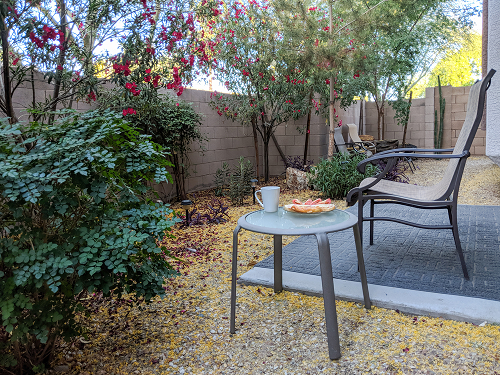
There are a few reasons homeowners develop an interest in xeriscape designs. The most common include:
- It saves money on water
- It is more eco-friendly
- It requires little maintenance
These perspectives have an impact on the decisions made during the design process. For instance, if you are approaching xeriscaping from an environment-conscious angle, you want to select native plants. For a rental home, choose low-water plants. Here are things to consider in your xeriscape landscaping ideas.
Watch Out for Problem Areas
Survey your landscape and take note of areas that appear to be problematic in terms of difficulty to water and maintain. Pay attention, especially to steep slopes, narrow strips, and corners of your lawn, drought-prone, and rocky areas. For the stubborn areas, drip irrigation may be your best choice because it applies water slowly over more extended periods to minimize the possibility of a runoff.
Choose the Right Plants
A good design for xeriscape accommodates both drought-tolerant and native plants. These should be planted according to their watering needs. Grouping plants allows you to water what needs to be watered. Soaker hoses are an ideal watering choice because they allow water to soak into the ground instead of running off.
Transform your Landscape
Begin by improving the soil. Clay soil binds together after it rains because it has small particles. This enables the soil to form a tight bond to prevent moisture from absorbing into the ground. Ensure that your soil is rich in organic matter that acts as a sponge to hold water and release moisture.
The other idea would be to use mulch. A thick layer of mulch helps in maintaining a consistent amount of soil moisture. Pine needles, grass clippings, compost, and leaves, are some of the organic mulches to use. These minimize evaporation. Some gardeners also prefer stone and gravel, but these do not decompose and can make it challenging to move plants around.
Many xeriscape landscaping ideas can be embraced without limiting you to specific types of plants. These types of gardens can be designed in many styles. You only need to select the style that suits your landscape. If you choose the right plants and exercise xeriscape principles, you will achieve a thriving and head-turning garden. We specialize in maintenance, repair, irrigation, and water-saving landscape designs. If you are looking for a professional landscaping company, please contact us today.
11 Flower Bed Ideas for a Truly Modern Home
A smattering of flowers and plants can give your outdoor space a springtime feel, especially during warmer summer months. Similarly, the pops of color and texture exhibited by flower beds can easily shake off the winter dullness from your home. This list of 11 flower bed ideas can help you transform your yard into a luxurious nature park.
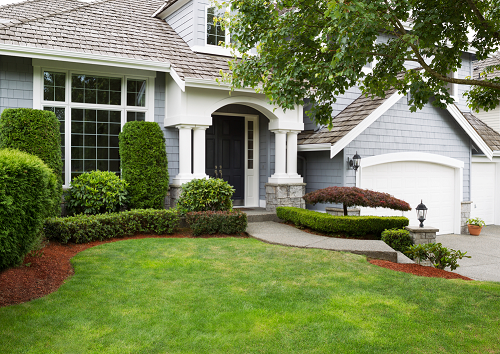
1: Combining Tulips with Perennials and Annuals
Combining tulips with perennials and annuals creates a harmonious arrangement that comes back each year with little maintenance. Just space out your flowers to ensure that the tulips stand taller than the shorter, low-growing perennials and annuals. Typically, your tulips will return every year when winters are colder. There are multiple color choices to pick from, including white and black tulips. Overall, planting clear, primary tulips creates a festive effect in any mixed flower bed. Some companion options for a full flower bed include Daylily, Catnip, Bells of Ireland, and Salvia.
2: Side Yard Flower Bed for Tiny Spaces
You can leverage your sidewalk by planting pretty bizzy lizzies in a beautiful flower box and around the edge of a foundation bed. To bring out an inviting look, contrast their pink and white blossoms with deep green hosta lilies. Although hosta lilies are commonly planted for their foliage, they also bear tiny white, lavender, or violet flowers.
3: Reconditioned Tree Stump Flower Bed
If you have old tree stumps within your yard, why not use them for a flower bed instead of digging them out? Add a pelargonium in the center and surround it with deep purple bellflowers and gold and orange nasturtium with variegated leaves. Additionally, plant some bellflowers, ornamental grass, and pelargonium around the roots for an excellent balance.
4: Rustic Hollow Log Flower Bed Idea
A hollow log can make a perfect flower bed for your home. Simply shovel in some gardening soil and plant some cheerful flowers such as pink, white, and blue phlox, daffodils, red gerbera, and blue irises. The green sword-shaped leaves of these flowers will contrast with the softness and brightness of your blooms, creating an inviting flower bed.
5: Tile Deck with Built-In Flower Beds
If you plan to add a patio or deck to your home, consider one with built-in planters. You can have inbuilt planters made of tile to match your tile deck or opt for a wooden planter. Built-in flower beds can transform your deck into a delightful living space, especially if you plant eye-catching flowers such as pure white roses contrasted with butter yellow sundrops and purple lavender.
6: Raised Block Flower Bed
You can make a raised bed using pre-cut blocks and pavers to make tending easier, particularly for the elderly. Consider planting ornamental grasses, asters, turf lily, small ornamental trees, and chrysanthemums for added beauty. Besides, you can even add herbs or vegetables to your raised block flower bed.
7: Gravel Yard Flower Bed
Having a bed in a gravel yard allows you to indulge in various heights, textures, and colors provided by agave and aloe plants. You could even add ornamental grasses, rosemary plants, sedges. Consider using colored gravel to separate the flower bed from the yard and mulch to brighten the color of your pants.
8: Flower Bed with Clay Pots
Nothing beats clay pots in terms of convenience in organizing and maintaining flower beds. Arrange multiple clay pots half-buried in a raised bed of gravel and plant beautiful bulbs and party-colored tulips. You could also add plants such as daffodils and onions or garlic.
9: Wheelbarrow Planter Flower Bed
If there is an old wheelbarrow lying around in the yard, you could plant it in the middle of your garden and fill it up with bizzy lizzies. You could also create a background of false sunflowers and add more bizzy lizzies and daylilies in front.
10: Vintage Suitcase Flower Planter
You can repurpose an old suitcase to create an exciting flower bed. Simply prop the suitcase on a chair and plant attractive white and purple striped bizzy lizzies, magenta, white asters, or petunias. If you’re worried about filling your old suitcases with dirt, consider planting the flowers in containers first.
11: Antique Bed Frame Flower Bed
Making flower beds out of old furniture is the latest trending flower bed idea. You can have a headboard draped with gold, purple, or white flowers and pillows made of tiny privets. You can then create a mattress with grasses, flax, or violets and crown it up with a footboard made of white-flowered shrubs.
Wrapping Up
If you’re looking to spice up your garden a little bit, these flower bed ideas could be a great way to do it. However, you need to remember that it takes some effort, time, and money to give your garden an extra splash. But at the end of the day, you’ll have a refreshing space to enjoy nature at its finest. Contact us for more information.
Small Backyard Ideas for a Magical Outdoor Space
Well-designed outdoor spaces can increase your enjoyment of your home. But what if you have a small backyard? Well, the good news is you don’t need a sprawling estate to transform your backyard into an outdoor oasis. Thoughtful landscape design can transform your small patio or yard into a refreshing outdoor space.
Transform Your Home with these Small Backyard Ideas
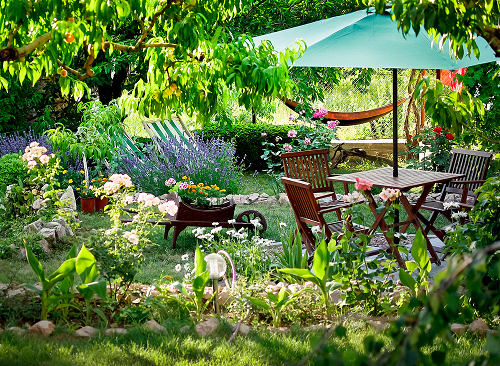
Whether you live in an apartment, townhouse loft, or a house with minimal outdoor space, you can carve out an outdoor space for yourself. Yes, even modest balconies and rooftop terraces count. Even a small yard can feel grand if you design it the right way.
Here are some small backyard ideas that can help you maximize the little space you have.
1. Create a Container Garden
You may not have the space or time to become a master gardener, but you can learn to create striking container gardens. When you lack good soil, containers allow you to make the ideal conditions for your plants to thrive.
All you need is a planter, some potting soil, and the plants of your choice. From hanging baskets to window boxes, you can embellish your backyard with bold foliage for a refreshing space your friends and family will love.
2. Think About Vertical Space
Vertical gardens, or living walls, are ideal features for small spaces. Think of the magnificent living tapestries that ornament public gardens and some buildings. You can bring the same beauty and vitality into your home using vine-covered trellises, closely planted fruit trees, and decorating your walls with hanging plants.
Reinvigorating your exterior with a living wall brings your backyard to life, attracting songbirds and pollinators, and can help temper the summer heat. Living walls also act as art, establish boundaries within a landscape, give you a sense of privacy, and obscure undesirable views.
3. Create a Focal Point
Focal points are used in landscape design to draw and direct the eye. If your backyard consists of a swath of plants or is crammed with furniture, your eyes will sweep along the area, not knowing where to land.
If your backyard is filled with plants and feels more like a garden, you can use a statue or a small fountain to detract some attention from the plants. You can also strategically place furniture to draw in the eyes. Conversely, if your space is adorned with furniture, you can use a large plant as a focal point.
4. Use Every Inch – Even the Side Yard
The side yard is often overlooked and can easily become a sad spot adorned with nothing but unsightly air-conditioning units. You can perk up your side yard by adding a stepping-stone path or install a welcoming entry gate if your space allows.
Another way is to draw the eyes up, away from the sides, using arbors, hanging vines, or strategic overhead lighting.
5. Embrace a Multi-Level Landscape Design
Breaking up your yard with steps, decks, retaining walls, or terraces can create the illusion of a larger backyard. A multi-level design helps to break things up visually, and you can help you separate the different functionalities of your yard.
You can have a dining patio on the upper level and incorporate different greenery into the lower levels.
6. Create a No-fuss Patio or Deck
Don’t have a green thumb? Not to worry. You can set up a murphy bar or an al fresco dining room on a bed of gravel, and voila! You added a little polish to your backyard. Add some statement chairs to create a laid-back or rustic atmosphere depending on the vibe you’re going for. And don’t forget to add some hanging lights to elevate the mood at night.
The idea here is to create a warm, welcoming space that doesn’t require you to get your hands dirty.
7. A Small Kitchen and Dining Area
Love to grill? You don’t necessarily need a large space for this. You can create an outdoor cooking center. All you need is a little space for a basic grill, counter, and a small dining area. You can even add to the ambiance by adding a fireplace or a small garden.
For your family, this could mean growing herbs in the garden, cooking dinner outdoors on the weekends, and enjoying evenings by the fire.
8. Maximize on Available Space
When you have a small backyard, it’s best to create a multifunctional space. You can invest in some portable furniture that you can keep in your basement or garage when not in use. Or, you can create seating benches that also double as storage spaces for lawn games and plants.
Better yet, you can build a mini storage shed that’s cute yet functional.
Revitalize Your Backyard
Looking for small backyard ideas that make a statement? DK Landscaping can help you create the backyard of your dreams. We are a full-service maintenance company with the tools and expertise to help you create a flourishing landscape.
Contact us today! The solution to your lawn and garden woes lies with us.
Rock Garden – It’s More Than What Meets the Eye
Contrary to popular opinion, there is more to a rock garden than a garden filled with rocks. In reality, it is a blend of plants and rocks complimenting each other.
Unlike easterners, mainly Japanese who use rock gardens to find enlightenment, we in the west are more focused on creating beautiful spaces that are a pleasure to look at and relaxing.
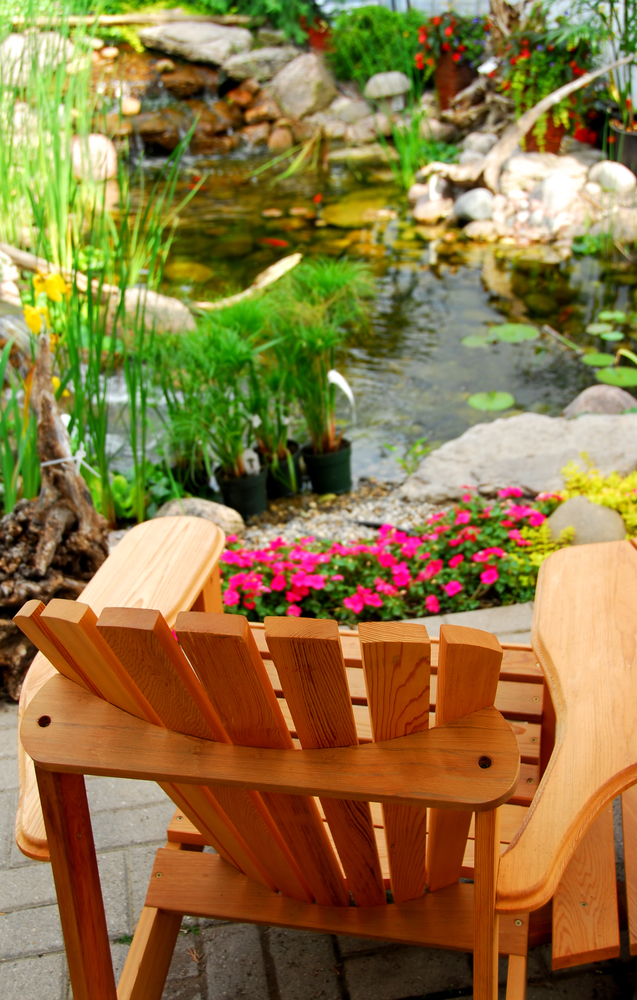
Before we get into how you can use the rocks, here are some few benefits of having a rock garden.
- First, these gardens can survive harsh climate. You can throw anything at them from extreme winters to sweltering heat, and they will endure. Strong winds or droughts will no longer be a concern.
- They are low maintenance. Unlike customary gardens, these are easy to maintain as they don’t require frequent feeding, watering, mowing, aeration, or control of pests. Moreover, the rocks can be placed around the plants to control weeds reducing the need for chemical control. They are ideal for people who lead busy lives.
- Also known as Zen gardens, you will appreciate that they look great all year round. However, you should use a combination of plants that bloom in spring and summer together with evergreens and fall foliage.
- Rocks allow you to create depth and diversity by combining tiny pebbles with large boulders.
- Rocks also create the illusion that your yard is large. Seeing as you use fewer plants than traditional yards, you create the perception that your yard is extensive.
How you can use rocks around the garden
You can use different stones to create a specific impact depending on what you want.
First, if you are looking for ambiance or a casual, laid-back garden, an area you can sit and relax; we recommend beach pebbles or river rocks. These add warmth, are pretty inviting, and are customizable seeing as they are available in various sizes and colors.
You can also use rocks to control weeds. Place them around your plants and flower beds, and fill up those empty spaces between plants as mulch.
You can use white marble chips to create a cheerful and bright space. They are especially useful in shady areas as their bright color will contrast with the dark soil and general ambiance there. You can also use dark marbles to balance out a bright area.
A rock garden will come in handy if you have a steep slope or uneven surface. Some of these spaces are difficult to mow and maintain. However, you can use rocks to transform it into a showcase of more delicate plants.
You can also use stones to create a border around your ponds. They are great for camouflaging the liners and creating contrast with the water for a dynamic look.
Conclusion
Rock gardening can give you a sense of sophistication and class. It is rare but beautiful, and the rocks and greenery compliment each other superbly.
However, it takes expertise to create a terrific rock garden. There is a ton of technical knowledge and experience required, and we encourage you to hire professional landscapers. You can contact us to book an appointment for garden maintenance, irrigation, water saving landscape design, and rock gardens. Contact us for more information.
Outdoor Space Improvement: Simple Garden Ideas for Beginners
Establishing a garden on your property can be highly beneficial. In general, a home garden can be used for growing consumable produce or decorative plants. You can make your property more beautiful by planting flowers and other appealing plants in your garden. Alternatively, you can choose to plant vegetables, herbs and fruits. You will have access to fresh produce at a low price. It is possible to combine both categories of plants for a perfect garden.
If you are new to gardening, you might find starting the process challenging. Here are some basic garden ideas and simple guidelines for a smooth beginning.
Understand Your Environment

It is essential to learn more about your environment before starting the gardening work. If you are knowledgeable, you will increase the rate of success from the beginning. For the best results, choose a perfect spot on your property to start a garden. The spot should have adequate sun exposure. Too much or little sunlight will damage plants. It is also advisable to check the condition and properties of the potential gardening soil. Once you understand the specific characteristics of your garden, you can choose the most suitable plants to match the unique environment.
Consider Container Gardening
If you do not have enough space on your property, consider choosing container gardening. This one of the most beneficial and popular garden ideas in the modern home environment. You will be able to enjoy flowers or produce even with limited space. In addition, container gardening gives you more control. For instance, it is possible to grow any kind of plant because you can prepare unique soil material and move the container to different places for optimal environmental conditions. If you decide to take up container gardening, consider taking advantage of space on your patio, deck and rooftop.
Look into Vertical Planting
Most people opt for garden plants that remain close to the ground. If you are interested in a fresh idea for your home, think about growing some vertical plants. As implied, vertical planting involves establishing plants which grow upwards by climbing onto fences, stakes or trellises. This type of gardening can help you maximize your limited space. It also creates unique aesthetics in the home. In addition, this is the perfect gardening choice for people who might find squatting and bending difficult.
Choose Seeds or Starter Plants
Once you have decided on your ideal gardening style, you can begin choosing plants for your project. When selecting the perfect plants, it is advisable to keep your environment in mind. Some vegetables, herbs and flowers will not thrive in certain environments. Therefore, opt for plants which can grow with ease in your home. You will also need to choose whether to acquire starter plants or seeds. For a beginner, starter plants or seedlings are the most suitable. This choice will eliminate your worries about sprouting. On the other hand, seeds are cheaper, and you will find diverse plant species.
Utilize Companion Planting Methods
Consider utilizing a companion planting technique in your garden for better results. This approach is perfect if you would like to have a mixture of plants on your space. Companion gardening involves planting different complementary species of plants together so that they will benefit from one another. For instance, if you are planning on growing vegetables, you can plant carrots alongside leeks. The lees will repel harmful carrot flies. Note that there are some plants must not be planted together. If two species are affected by the same diseases and pests, avoid planting them together. Contact us for more information.
Backyard Ideas: 5 Easy Tips for Creating a Beautiful Drought-Resistant Back Yard
Earlier this year California made permanent the water restrictions that had been in place throughout the drought. While many people re-landscaped their front yards during the dry years, many more let their back yard lawns wither away, or removed them completely. But efficient, non-wasteful irrigation doesn’t mean you can’t enjoy a beautiful back yard retreat.
Xeriscaping, or water-wise, climate appropriate gardening, can allow you to have all the color, blooms, and lushness you desire while significantly reducing water use and maintenance. Try one or more of these 5 backyard ideas that are ideal for the dry summers and wet winter Mediterranean climate of Sonoma County.
Low-maintenance backyard ideas
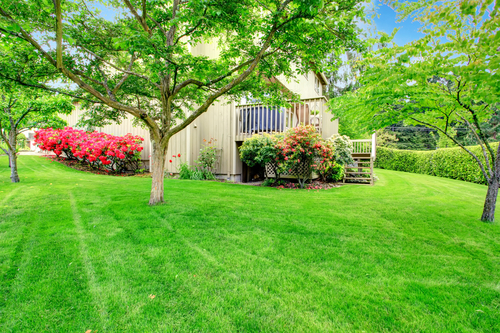
Landscaping your back yard with waterwise techniques is not only environmentally friendly, it can be downright gorgeous. Here’s how.
Native plants
Always a good choice for xeriscape principles, climate-appropriate plantings are those that are suited to your local water availability. Here in Sonoma, good native choices include
- Perennials like lavender, rosemary, Santa Barbara daisy, Mexican sage, verbena, catmint, and dusty miller.
- Annuals and bulbs that are well-adapted to drought-tolerant gardens. Think daffodils, irises, California poppies, larkspur, and alyssum.
- Vines that include climbers like wisteria, honeysuckle, grape, and potato vine.
- Drought-tolerant grasses such as fountain, blue oat, blue fescue, sedge, and deer grass.
- Aloe, agave, echeverias, and sedums are good succulent choices that cover a wide spectrum of the green palette.
Groundcovers
Groundcovers are a great replacement for lawns, help to prevent soil erosion, and add a lovely splash of color. Is your Sonoma back yard mostly sunny? Rockrose is a hardy choice that requires almost no care. More shade than sun? Try creeping barberry. It’s bright yellow flowers in mid spring and blue berries in early summer make this a real show-stopper.
Don’t forget the mulch. It helps to moderate soil temperature, curtail evaporative water loss, and keep the weeds out of sight. The most common mulches are chipped or shredded bark, but gravel and stone can also be used.
Hardscape
There’s nothing more low-maintenance than hardscape. Paved areas, retaining walls, and stone and brick pathways create a clean minimalist look that can be enhanced and added to depending on what style back yard you prefer. Try a walkway of pea gravel with stepping stones that leads from the deck to the garden. A stone patio or composite deck are ideal for backyard barbecues.
Decorative stone
Use a mix of different gravels throughout the backyard landscape for more visual appeal. Decorative stone like river rock comes in many different sizes, shapes, and colors. Together with decomposed granite, it’s a great choice for surrounding a water feature or filling a raised or flat bed.
Create multiple outdoor living spaces
A nice balance of plantings and outdoor living areas lets you extend your home’s footprint while having less grassy areas to maintain. Even less expansive back yards can have several smaller areas that offer lots of options for entertaining. One area can feature the grill, another the bar setup, and another can hold seating and dining options.
Just keep in mind that regular maintenance isn’t eliminated by xeriscaping. Fertilizing, pruning, and occasional weeding are all still required. Irrigation systems should be tested and adjusted according to the season. And pest management is a core practice of xeriscape ideology.
Learn More
If you’d rather spend less time taking care of your back yard and more time relaxing in it, or just want some more terrific backyard ideas for your own home, contact us today. We’d love to show you all the ways a water-smart backyard can be a beautiful one, too.


